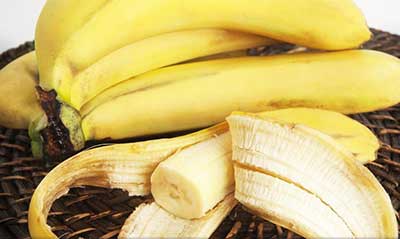Relevance: GS-3: Infrastructure,Energy
Key Phrases: Proton Exchange Membrane Fuel Cell; fuel tanks can carry 5-6 kg of compressed hydrogen, with each kilo providing a range of about 100 km; Biochar; Biomass; Remediation.
Why in News?
- Research group working at the Swiss Federal Institute of Technology in Lausanne has developed a novel way of extracting clean energy from renewable sources.
Key Highlights
- They used splitting of biomass - banana peel, orange peel, coconut shells — by flashes of light emanating from a Xenon lamp.
Appeal of Hydrogen
- High Energy storage Capacity
- This makes hydrogen an attractive energy source.
- High Energy Value
- ○ Hydrogen has an energy value that is seven times that of carbon.
- Zero Emissions and doesn’t tax the environment
- End products in the burning of wood due to oxidation of carbon and hydrogen in a heat-generating reaction are carbon dioxide and water.
- The former is a greenhouse gas, contributing to global warming. Burning of hydrogen gives us only water and heat.
- A smarter way to harness the energy in hydrogen would be to generate
electricity with it.
- This is achieved in a proton exchange membrane fuel cell where, in the presence of a metal catalyst, a hydrogen molecule is split into protons and electrons, with the electrons providing the current output.
Transport Vehicles
- Faster Refuelling
- Unlike electric cars, hydrogen-powered cars have a refuelling time of only about five minutes.
- Such fuel cells are now used to power a few light passenger transport vehicles in some parts of the world.
- Better Mileage
- Commercially available hydrogen-powered cars have fuel tanks that can carry 5-6 kg of compressed hydrogen, with each kilo providing a range of about 100 km (and emitting nine litres of water, mostly as steam).
Challenge
- The limited popularity of hydrogen as fuel is due to production and distribution restraints. It is safer to handle than domestic cooking gas.
- Over 90% of the world’s hydrogen is produced from fossil fuels.
Way Forward
- Utilising Biomass to produce Green Hydrogen
- Biomass is a rich source of both hydrogen and carbon — our dried banana peel has a hydrogen content of 5%, and 33% is carbon.
- The Swiss group uses Pyrolysis, wherein organic matter is decomposed using small bursts of intense heat under inert conditions.
Procedure involved
- Pyrolysis - Flashes of irradiation from a xenon lamp provide the
heat — a total of 15 milliseconds of irradiation are enough to heat the
system to 600 degrees Celsius, and decompose a kilogram of banana peel
powder — liberating 100 litres of hydrogen gas.
- It is worth noting here that if the biomass had been burnt, gaseous carbon would have escaped as carbon monoxide and carbon dioxide. Pyrolysis ensures that carbon remains sequestered as a solid.
- Producing Biochar - This short burst of photo-thermal energy also produces 330 grams of biochar, a solid residue that is rich in carbon.
- Benefits of biochar
- Safekeeps carbon (Doesn’t let sequestered carbon to escape)
- Agricultural leftovers such as rice husk are a major source of biomass, and the biochar it forms has significant mineral content.This can enrich plant nutrients in the soil.
- The porous nature of biochar makes it suitable for remediation — the adsorption of toxic substances in polluted soils - thus reducing the potency of contaminants in the soil.
Conclusion
- Biomass, be it from banana peel, or tree bark or poultry manure, thus improves air quality and adds value to agricultural produce — while setting in motion that emission-free car.
Important Concepts
- Types of Hydrogen
- Grey Hydrogen
- 90% Hydrogen is produced from this process.
- By product - CO2
- Blue Hydrogen
- By Product - CO2 and CO, but these are sequestered.
- Green Hydrogen
- From Electrolysis of Water but using renewable energy as source to split the water.
Thermochemical Conversion Methods to produce Biomass
- Pyrolysis
- Uses heat in absence of Oxygen.
- A mixture of solid residue and gases are produced.
- Gasification
- Uses high heat (500-800 degree Celsius) in limited presence of Oxygen
- To produce SynGas (CO+H2)
- Grey Hydrogen
Source: The Hindu
Mains Question
Q) What are the benefits of Fuel Cell Vehicles over conventional vehicles and EVs? Mention other alternatives to Grey Hydrogen. Also mention, benefits of utilising biomass to generate Hydrogen.








